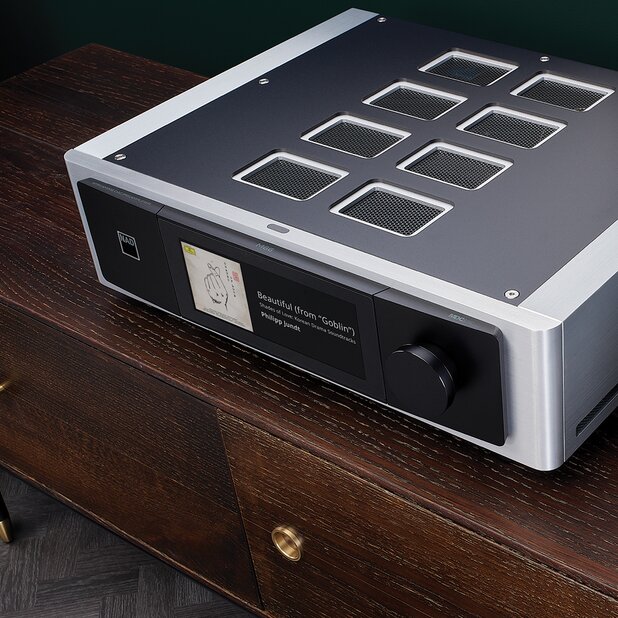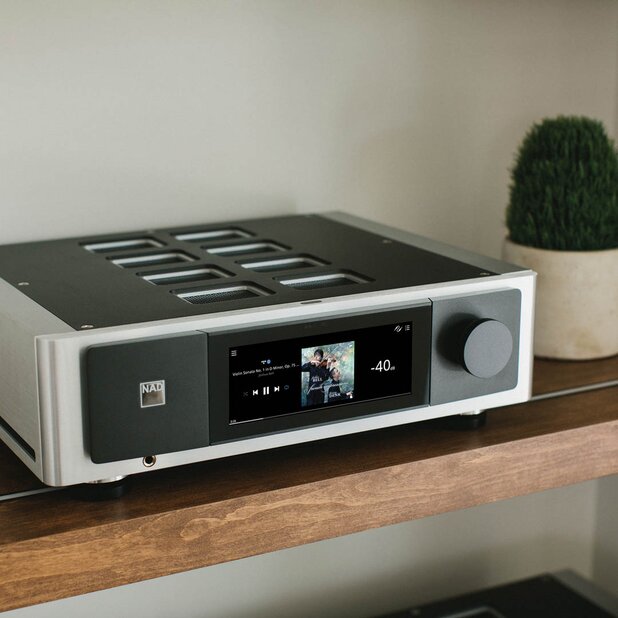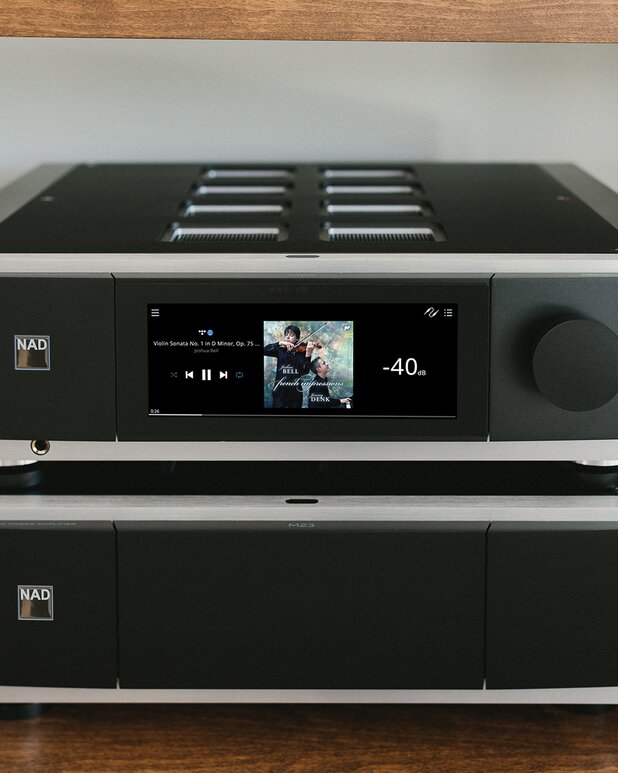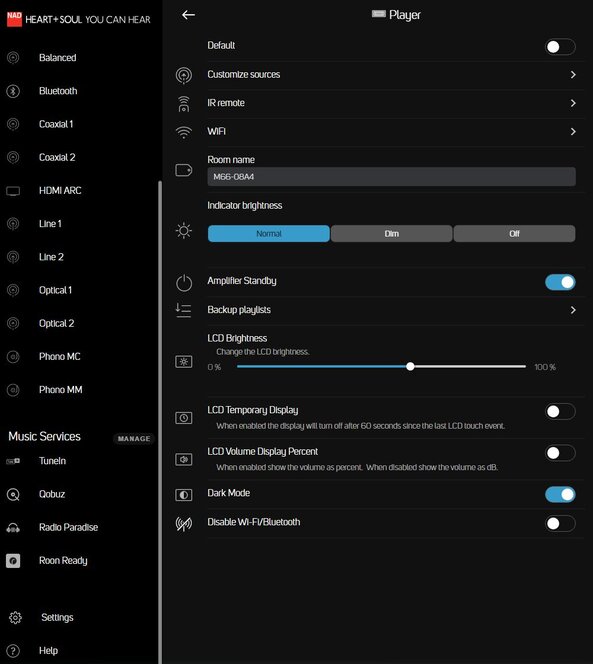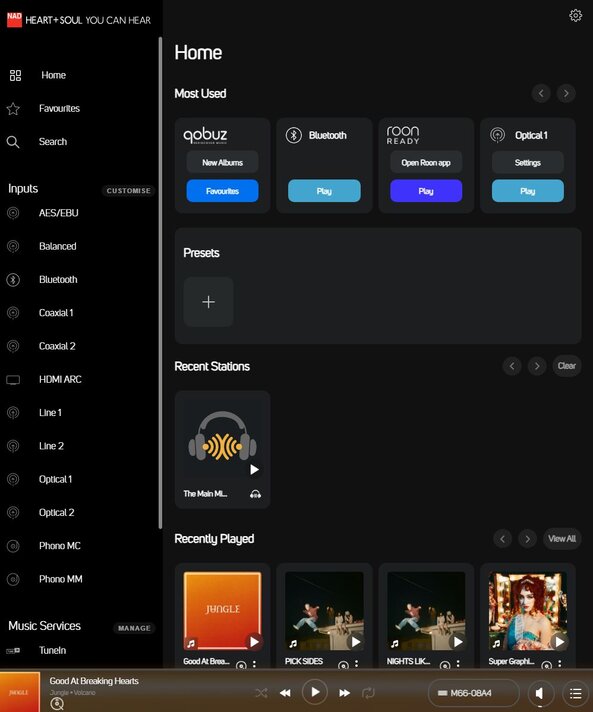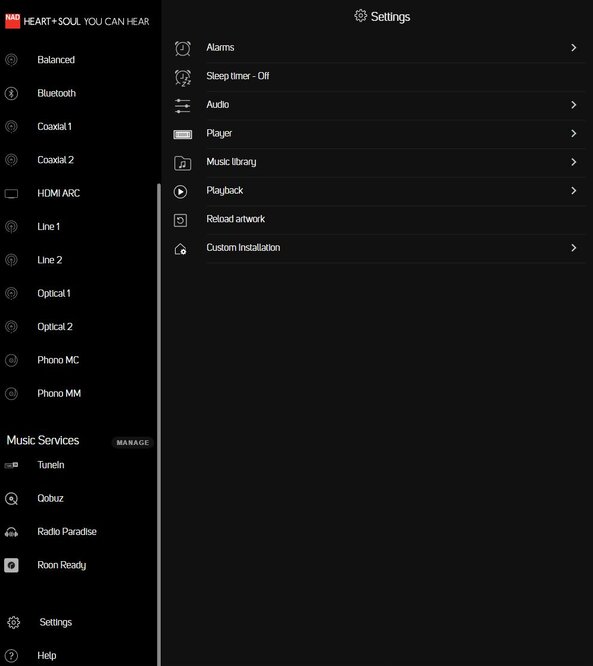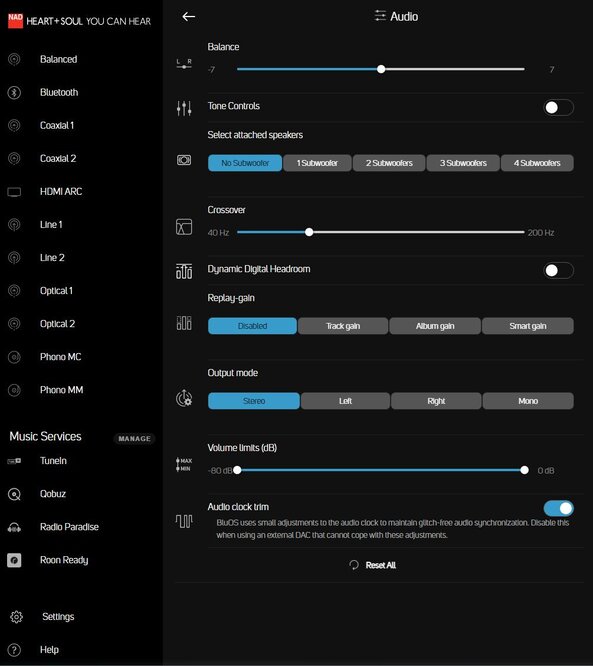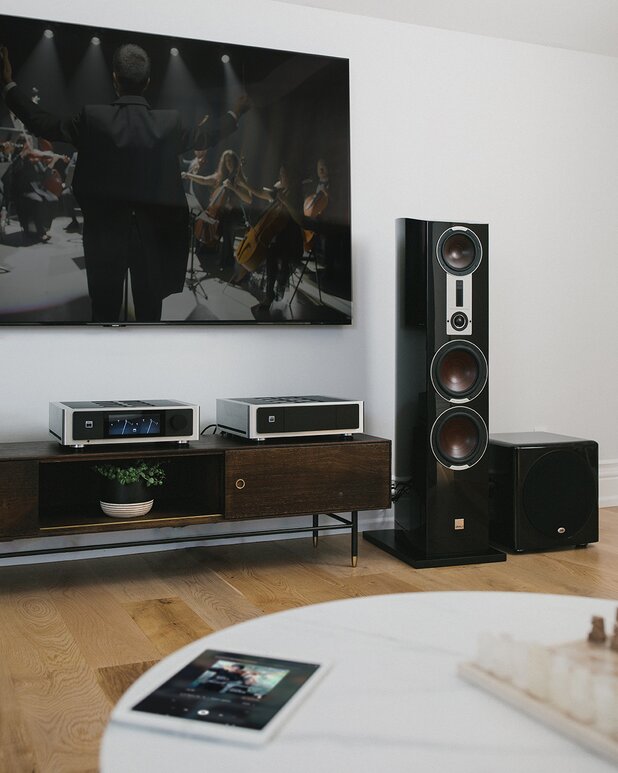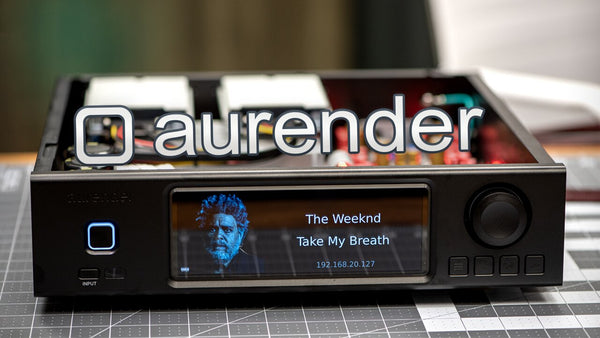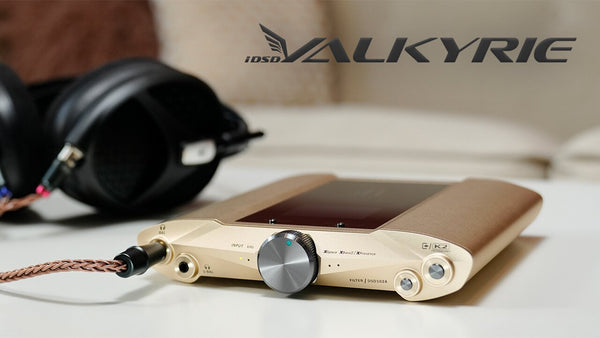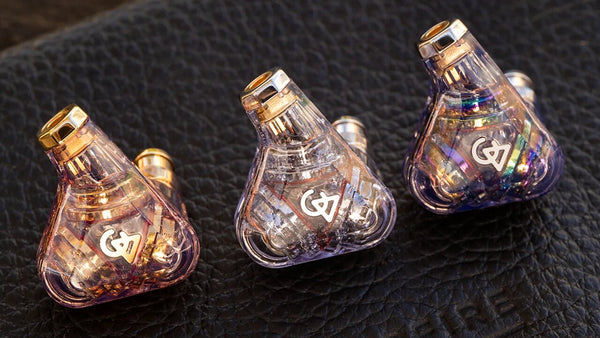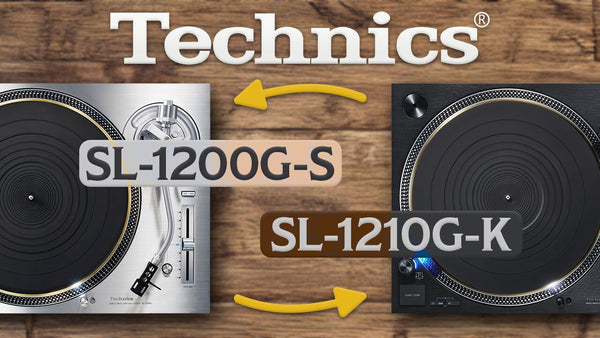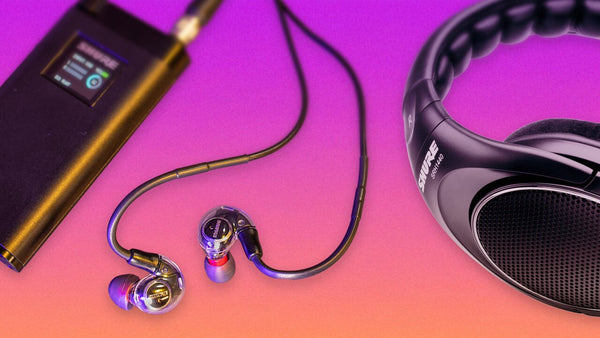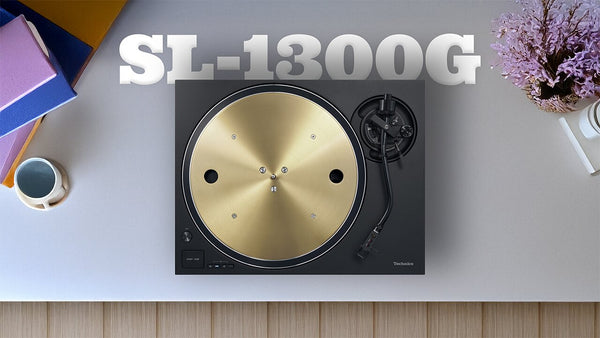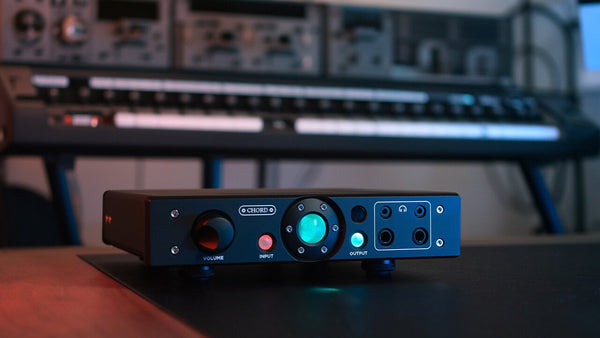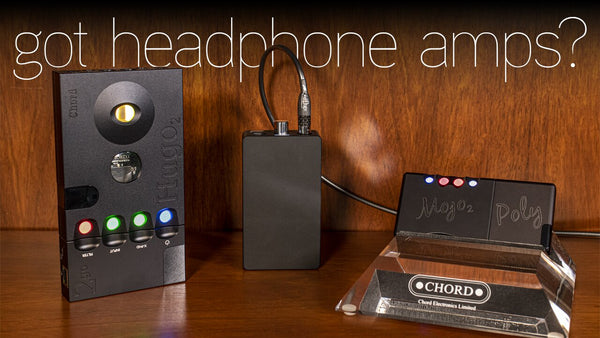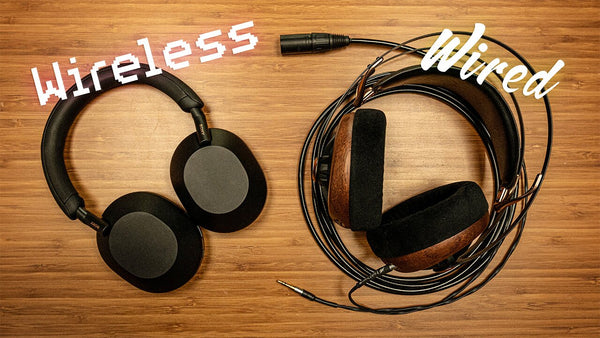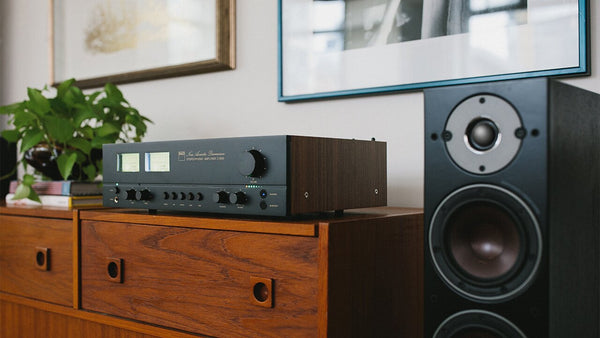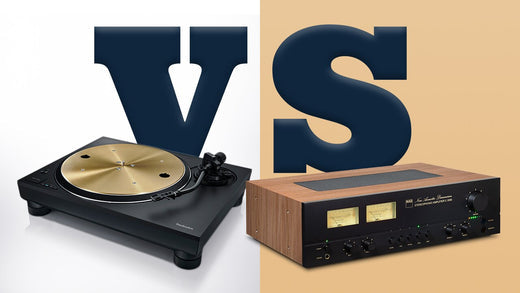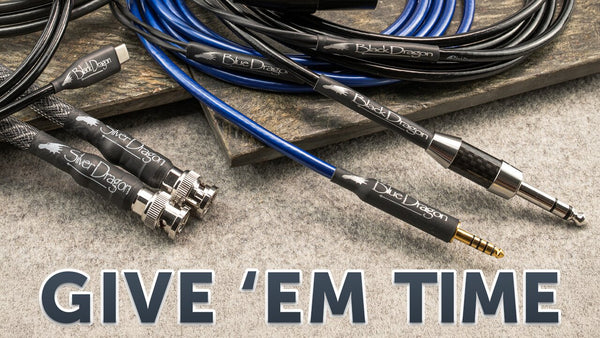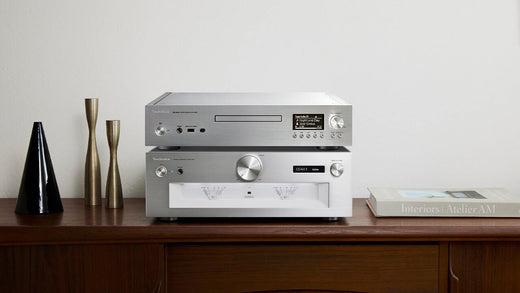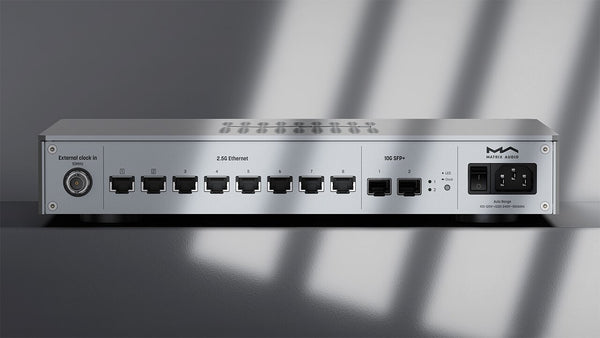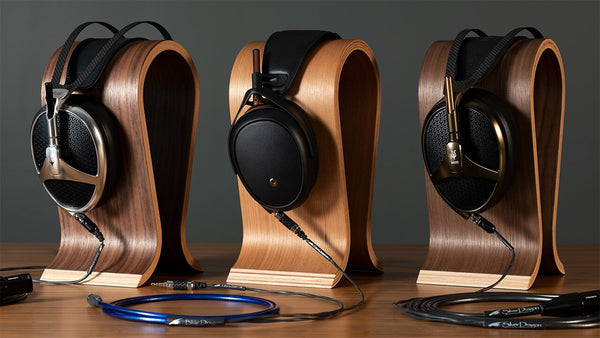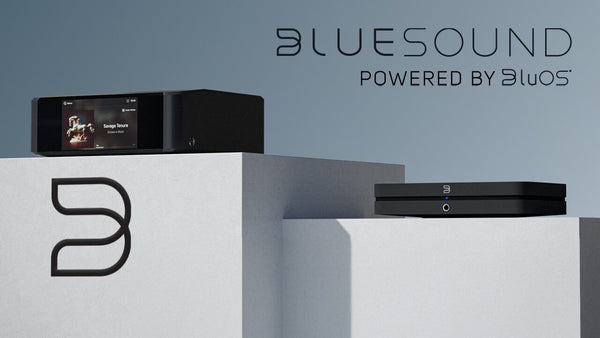Is the NAD M66 the Most Powerful Streaming DAC Preamp Yet?
Read Time: Approx. 18 min.

A Comprehensive Review of the NAD M66 and Masters Series Collection
Hi-Fi audio manufacturer NAD Electronics has long been renowned for their pursuit of audio excellence through minimalist design principles. Their Masters Series, introduced in the early 2000s, represents the company's flagship line of high-end audio components, and the M66 BluOS Streaming DAC Preamplifier sits as the crowning jewel of the series. Rounding out the Masters Series (that we carry here) is the NAD M23 Stereo Power Amplifier and M33 BluOS Streaming DAC Amplifier–two highly-capable units. The Masters Series expands beyond these three components but for the sake of this review, we're going to focus on the units sold at Moon Audio.
Let's discover why the NAD Master M66 is one of the company's notable endgame units and which Masters Series component is right for you.

PROS
- FEATURE-RICH!!
- 4 Independent Subwoofer Outputs
- Upgradable Path for long product life
CONS
- Decently-sized component
- Premium Price Tag BUT flagship- level status
NAD Masters Series
The Masters Series is NAD Electronics flagship line of products delivering exceptional performance through its use of premium materials and modular design architecture. Quality is a cornerstone of NAD Electronics' philosophy, striving to deliver audiophiles, audio professionals, and music lovers with a component that's minimal, uncluttered, and intuitive. This value is so strong that NAD Electronics won't let a single product that isn't exceptional hit the production line.
"From start to finish, our decisions on which design, features, and components make it into a new product are based on whether they enhance true-to-source sound performance. If no appreciable improvement is there, we go back to the drawing board. We are so adamant in our philosophy that we have been known to delay the release of new products until we achieve what we believe is a winning formula."
The aesthetic design of the Masters Series reflects the brand's philosophy of understated sophistication. Straying from the often ostentatious designs found in high-end audio, the Masters Series features distinctive brushed aluminum casework with clean lines and minimalist controls. This approach aligns with NAD's historical emphasis on performance over superficial aesthetics, though executed at a higher level of fit and finish than their standard lines.
MASTERS SERIES: PRODUCT LINEUP
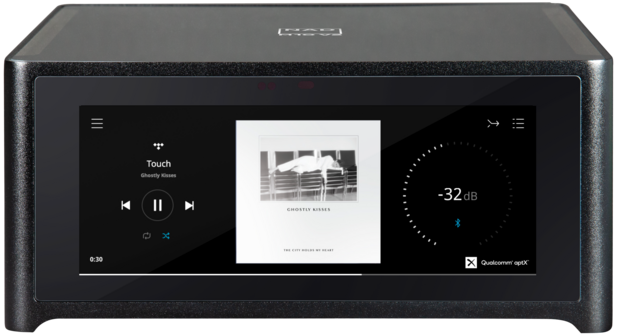
NAD Electronics M10 V2 BluOS Streaming Amplifier
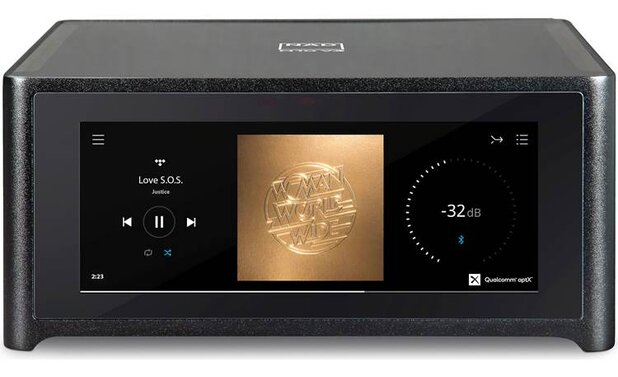
NAD Electronics M10 V3 BluOS Streaming Amplifier
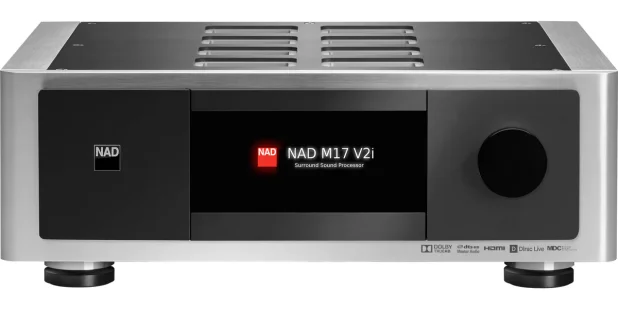
NAD Electronics M17 V2i Surround Sound Preamp Processor

NAD Electronics M28 Seven Channel Power Amplifier
NAD Masters M66 BluOS Streaming DAC Preamplifier
FEATURES AT A GLANCE
- BluOS Network Streamer with access to over 20 streaming services and lossless high-resolution audio
- Dedicated headphone amplifier with low output impedance and very high output voltage capability
- Dirac Live Room Correction for acoustic calibration
- Dirac Live Bass Control
- Full MQA hardware decoding and rendering
- Support for audio casting technologies like Apple AirPlay 2, Tidal Connect, etc.
- Seamless integration with smartphone control systems
- Innovative Dynamic Digital Headroom (DDH) circuit eliminates digital intersample peak clipping distortion
- Ultra-precise resistor-ladder volume control for analogue signals
- 7” front-panel touchscreen
- Ultra-quiet MM/MC phono stage with precise RIAA equalization, high overload margins, and infrasonic filter
- HDMI port with ARC and eARC support
- Two MDC2 expansion slots for additional future capabilities
- Ethernet and Wi-Fi networking
At $5,499, the NAD Masters M66 is arguably the mac-daddy Streaming DAC Preamplifier of the lineup with the NAD M33 following closely behind. The M66 combines an audiophile-grade DAC with a high-resolution multi-room music streamer. Equipped with the most advanced preamplifier NAD Electronics has ever offered, the M66 represents an entirely new class of hi-fi separate components, showing you just what's achievable in a two-channel preamplifier today.
With an incredibly large suite of analog and digital outputs, there is no limit to what source you connect to the M66. The analog and digital signal paths have been kept entirely separate with dedicated power supplies, allowing you to maintain a purely analog signal path. Turntable lovers get the luxury of MM and MC phono stages with precise RIAA equalization, high overload margins, and a circuit that suppresses infrasonic noise present with vinyl playback. It's a highly compatible unit that's an ideal match for the NAD M23 Stereo Power Amplifier, but of course it can be paired with any high-performance power amplifier.
Don't let the price tag of the M66 turn you away–you get what you pay for and more. NAD Electronics prides itself on delivering very high performance at affordable levels. Certainly the M66 isn't inexpensive, but you get some of the best performance in its class. The M66 is equipped with some of the most high-performing software and technology you'd find in $10,000+ units. Dirac Live software calibrates your room's acoustics and places correction filters so you can enjoy exceptional sound quality in any space without spending 30 minutes calibrating each individual subwoofer and speaker.

BluOS, Bluesound and NAD Electronics dedicated streaming platform, takes the M66's capabilities even further, unlocking the world of high-resolution music streaming at your fingertips. BluOS transforms the M66 into a network streamer, allowing you to access your personal digital music library, hundreds of internet radio stations, and dozens of music streaming services. Truly the brain of the M66, BluOS is responsible for its seamless user experience, enabling you to pair it with other BluOS components for a multi-room wireless ecosystem.
If you're not yet convinced the NAD Masters M66 BluOS Streaming DAC Preamplifier is the missing component in your home audio system, check out our full review below!
Design
Design-wise, the NAD M66 is in a league of its own. It's a larger-sized component–so it's going to take up some real estate in your home audio setup–but don't let its form factor fool you; it doesn't weigh a ton. Its gross weight is 35.8lbs but it doesn't feel like it AT ALL. The M66 retains NAD's minimalist, uncluttered design aesthetic with sleek aluminum casework and little to no buttons on the front panel. You get a nice mix of metals and finishes with the black faceplate, silver casework, and unique black grates on the top and side panels. The grates provide such a unique element to this unit, allowing you to see bits of the internal circuitry, while providing the necessary ventilation so the unit doesn't overheat as easily.
The front panel sits about 1/4” off the faceplate (if that) and features an ultra-precise resistor-ladder volume control for analog signals and a highly-sensitive standby button on the top that you just might miss if you're not looking closely. Full transparency: I didn't notice it until I grazed over it and the unit shut off...so yeah it's a little sensitive. Users can control the unit from the front panel 7" touchscreen or through the BluOS platform available on desktops, tablets, and smartphones. The BluOS app is FAR more expansive than the front panel touchscreen and is where you'll do the majority of your controlling, accessing your personal music library, streaming services, advanced settings, etc. Tucked right underneath the front panel is a 6.35mm headphone jack. Did I mention it comes with a remote control too and a VU meter on the touchscreen! On the back panel you'll find an array of inputs and outputs–a lot so bare with me.
You'll also find two MDC2 slots that turn this ordinary unit into an upgradable one. This is something NAD has been including in their products for a long time, which not only extends the life of the product but creates an upgradable path.
So, sure you're spending close to $6,000 for a unit, but it's one that will grow with you and in time you'll receive a return on investment and some.
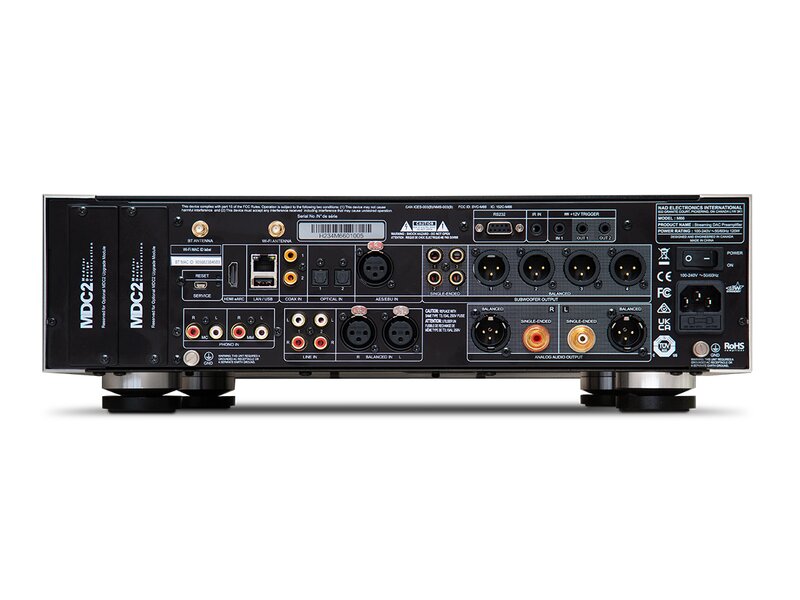
INPUTS & OUTPUTS
- Power
- Reset Tact Switch
- HDMI eARC
- Bluetooth Antenna Terminal & Wi-Fi Antenna Terminal
- LAN Port
- Optical & Coaxial Digital Outputs
- AES/EBU Input
- 4x Single-Ended Subwoofer Output
- RS 232
- IR Input
- +12V Trigger Input
- 2x +12V Trigger Outputs
- Phono MC Input
- Phono Ground Connector
- Phono MM Input
- 2x Line Inputs
- Balanced XLR Input
- Balanced Analog Audio Output
- Single-Ended Audio Output
- Fuse Holder
- Ground
- AC Mains Input
On the back panel you'll find an array of inputs and outputs–a lot so bare with me. You've got an HDMI port with eARC support, two coaxial and two optical S/PDIF inputs, an AES/EBU balanced digital input, two pairs of RCA line-level analog inputs, and one pair of XLR balanced inputs. Turntable lovers will appreciate the M66'S ultra-quiet MM/MC phono stage with precise RIAA equalization, high overload margins, and a circuit that suppresses the infrasonic noise present with vinyl playback. There's also a reset tact switch to force a factory reset, Bluetooth and Wi-Fi antenna terminals, an Ethernet/LAN port, +12V trigger input, and two +12V trigger outputs. Anything else I might've missed can be found above. The M66's Bluetooth connectivity supports AAC and aptX HD codecs.
In addition to these inputs, you'll find unbalanced RCA and balanced XLR outputs for connection to a power amplifier, as well as four independent unbalanced RCA and four balanced XLR subwoofer outputs. This is arguably, one of, if not the coolest feature of the NAD M66. Why? Now you can customize an entire home audio system and configure each subwoofer independently. There can be a catch 22 with having multiple subwoofers–adding multiple subwoofers to a system can help even out the sound in a room, but too many subwoofers can also cause issues of them canceling each other out. Fortunately, NAD Electronics has taken that into account and included a unique technology to solve that problem, improving the system performance and sound quality.
Sound
While the NAD Masters M66 is packed with features and technology, there's something to be said about the sound quality. For the ease of testing out the unit at my desk, I used the 6.35mm headphone jack and paired it with two cans–the Meze Audio Empyrean 2 Headphones and Focal Stellia Headphones. Qobuz has a great playlist "100 Tracks to Test Your Speakers" which is always a go-to for me when testing.
So right away I noticed the accuracy and clarity to the sound. NAD Electronics uses ESS Technology's ESS Sabre ES9038PRO DAC which is known for having an exceptionally wide dynamic range, ultra-low noise and distortion with outstanding time-domain performance. The M66's performance is what you'd expect from a component of this caliber–clean, balanced, and unproblematic. Audiophiles who crave an accurate sound will be thrilled by the M66 to deliver perfectly-timed sound.
On both the Meze Audio Elite Headphones and Focal Stellia Headphones I noticed a tight and controlled sound. Given the sonic differences of these two headphones, key elements of songs were still shining through. "All of My Friends" by River Whyless starts out jumbled–the best way I can put it. You've got many instruments playing at once with what also sounds like some synth and other techno-like elements. On top of that the female vocalist starts humming and singing, all within the first 30 seconds. I recently heard this group live at an outdoor concert series and they played this very song. I was practically in the front row and there were still so many tiny elements of this song I missed in person. The NAD M66 provided great depth to the song, allowing me to clearly hear each instrument independent from the other.

Baby Brother
By River Whyless
(We All the Light)

Pink Pony Club
By Chappell Roan
(The Rise and Fall of a Midwest Princess)

13
By LANY
(LANY)

Imgonnagetyouback
By Taylor Swift
(The Tortured Poets Department)
Features & Technology
INTERNAL CIRCUITRY
Equipped in the M66 is the flagship ESS Sabre ES9038PRO DAC, known for its exceptionally wide dynamic range, ultra-low noise and distortion, and outstanding time-domain performance. To make sure DSP-enabled functions like Dirac Live are available with all sources, analog signals are converted to digital by ESS Technology's flagship ES9822PRO ADC chip. However, users can select the analog direct mode, bypassing all digital processing. Moreover, the M66 has separate signal paths for analog and digital sources and internally the analog and digital sections are physically separated and shieled from each other with their own separate power supply sections.
To deliver peak performance, the M66 is features NAD's innovative Dynamic Digital Headroom (DDH) circuitry, a new technology that can be activated with a control in the BluOS app. DDH eliminates digital intersample peak clipping distortion, which can occur during digital-to-analog conversion. When activated, you'll notice an incredible difference with percussion instruments–rim shots are faster and less strident; cymbals are more realistic and less splashy.
A multi-stage resistor ladder volume-control circuit is employed in the M66 to minimize thermal and related distortions that are characteristic of traditional analog volume controls. It maximizes dynamic range and accurately matches left and right-channel output across the entire volume range.
The M66's dedicated headphone amplifier has a very low output impedance and high maximum output voltage, enabling it to drive demanding high-impedance studio monitor headphones and virtually every pair you throw at it.
BLUOS
The NAD M66's network streamer is based on the acclaimed BluOS multi-room music-management system. The BluOS app is one of the most intuitive and well-thought-out companion control devices for any streaming device out there. Available on your smartphone, tablet, or desktop computer, the BluOS platform is the "brain" of your M66, allowing you to manage all of your music and stream it easily.
Through the BluOS app you'll be able to access your entire music library, listen to hundreds of internet radio stations and dozens of music streaming services. Access TIDAL, Qobuz, Spotify, SoundMachine, and many more streaming services (subscriptions purchased separately). Additionally, BluOS has Roon intergration that supports files stored on internal and external hard drives and NAS. You can also connect and share your music collection from a computer or network-attached storage drive to the BluOS app. The M66 has full MQA decoding and rendering capability and through BluOS can support resolution up to 24-bit/192kHz.
BluOS Features
Voice control via Amazon Alexa
Full support for Hi-Res Audio: WAV, FLAC, ALAC
3rd Party integrations such as Control4, Crestron, Lutron, ELAN, RTI, and more
Wi-Fi chipset technology
Bluetooth® aptX ™ HD
Dolby Atmos 3D experience & Dolby Digital Support
MQA (End-to-end studio-speaker technology)

BluOS has voice control with Amazon Alexa and Apple's Siri so you can play a track, or skip a song, and even say what room you want to listen to music in. Through the app you control the volume in any room, read detailed artist information, and even check what quality you are streaming. No more rummaging through the couch cracks for the missing remote!
Check out the images below for a sneak peek at BluOS on desktop. Through the BluOS app you'll be able to adjust settings on the M66 such as replay gain, DSD playback, crossover, and more.
DIRAC LIVE ROOM CORRECTION WITH DIRAC LIVE BASS CONTROL
Picture this: You and I both buy the same preamplifier for our stereo systems. It arrives at our doorsteps and I go to set it up in my rec room and you place it in your dedicated listening room. We follow the instructions, configure the unit, connect our subwoofers, and when we both hit play we hear two completely different sounds. Who got the dud? No one. Your room is just much more conductive to good audio sound than mine.
Room acoustics can make or break a listening experience. But who has the time and money to configure the perfect space? Some do, but not everyone.
NAD Electronics know that and thanks to Dirac Live Room Correction, you don't have to choose between a high-performance component and room acoustic accessories. The M66 is equipped with Dirac Live software, allowing you to calibrate and generate correction filters that compensate for acoustic problems like standing waves and unwanted reflections. Included with the M66 is a calibrated microphone that plugs into the M66's USB port, allowing you to identify and correct any errors using the dedicated Dirac Live app.
Configuring the perfect listening setup isn't always a possibility. Whether you're just shy of the perfect sound or don't have the ideal listening space, Dirac Live polishes the edges, improving timing and phase while correcting any unavoidable acoustic deficiencies.
Accompanying Dirac Live Room Correction is Dirac Live Bass Control, one of Dirac's newer technologies that treats subwoofer performance. Placing a subwoofer and matching it to main speakers can be difficult, even for seasoned pros, let alone adding four subwoofers to one space. Dirac Live Bass Control comes to the rescue, allowing you to calibrate and control each subwoofer independently so you can enjoy a smooth, consistent response throughout your listening room.
The combination of Dirac Live Room Correction and the Dirac Bass Control enables the M66's 4 independent subwoofer outputs to deliver more accurate in-room performance than any two-channel component can offer. With a perfectly calibrated listening space, you'll experience improved clarity, more precise imaging, improved timbral accuracy, and deeper, tighter bass.
NAD M23 & NAD M33: Overview & Comparison
Two additional NAD Masters Series products we carry here are the NAD M23 Stereo Power Amplifier and NAD M33 BluOS Streaming DAC Amplifier. The NAD M23 is the ideal companion component to the M66. The NAD M33 is a streaming DAC Amp like the M66, but at a lower price tag. Right off the bat I imagine you're asking yourself "What's the difference between the NAD M33 and M66?"
For starters, the M33 combines the functionality of the M23 and M66 into one component. You get a BluOS enabled network streamer, built-in DAC, integrated amplifier, and integrated preamplifier. The M33 still comes with Dirac Live Room Correction, Bluetooth, two MDC slots, and a MM phono stage input. Alternatively, the M66 has two phono stage inputs–MC and MM. It also has 4 subwoofer outputs, and quite a few more analog and digital inputs and outputs. BUT the M66 lacks an internal power amplifier so it requires external power amplification–hence the recommendation to pair it with the M23. So in this case, you're saving $500 right off the bat with the M33, plus however much it may cost you to buy a power amplifier (if you already don't have one) for the M66. If you already have a dedicated power amplifier, then the M66 may be more enticing to you.
If you've got quite a large home audio system with several subwoofers and many configurations, the M66 is better equipped to handle that and you'll benefit from the multiple subwoofer outs on the unit.
Dragon Audio Cables
[Silver Dragon Network Cable, Silver Dragon Interconnect Cable, and Black Dragon Power Cable]
There are a lot of reasons why you need to make sure your audio cables are not afterthoughts. With a system as grand as the NAD M66, it demands high performance.
We recommend pairing the NAD Electronics M66 Streaming DAC Preamplifier with the Black Dragon Power Cable, Silver Dragon Network Cable, and Silver Dragon Interconnect Cable. The Black Dragon Power Cable is the ultimate power cable designed to be dead quiet and reject all EMI and RFI interference. 4-11Awg Stranded high purity slow drawn Copper conductors are used per cable in a star Quad configuration. The cable has a single 100% coverage shield but can be doubled up for noisy environments plus it is relatively flexible. Pair the M66 with your favorite subwoofer and you’ve got the perfect hifi setup.
Choose our Silver Dragon Interconnect Cable with RCA connectors to integrate the M66 with other audio devices in your setup. Sold in Pairs, the Silver Dragon V2 is our top-of-the-line silver conductor-based interconnect. With a braided geometry and amazing shielding, this interconnect is a remarkable solution where noise isolation is key. The braided geometry itself acts as a noise rejection and the shield aso adds more durability to the cable for runs on a studio floor. Lastly, the Silver Dragon Network Cable will provide a stable network connection to the M66 during use. High speed, low latency, and low jitter perfect bit rate communication between audio components can be maximized by using solid core silver conductors. The Silver Dragon Network Cable uses 8 solid core 99.999% pure silver 26AWG Teflon insulated conductors.
Verdict
Who is the NAD M66 for? The NAD Masters M66 BluOS Streaming DAC Preamplifier is for the audiophile and music lover craving an accurate, artiluate listening experience. Someone with a dedicated home audio system or large vinyl collection, looking for that missing piece to round out their setup. When paired with the NAD M23 Power Amplifier you get two separates riffing off each other in perfect harmony. This dynamic duo delivers clarity, treble extension, texture, and detail. Sounds the most discerning listener will crave.
Between the sound quality, design, and features, the M66 is everything but the kitchen sink. You get room correction software, the dedicated BluOS platform for music streaming, an integrated amplifier for headphone listeners, 4 subwoofer outputs for the ultimate home audio experience, and so much more. Not to mention it's a Roon Ready unit, allowing you to integrate it into an existing Roon ecosystem as a Roon endpoint. Round out your home audio system with the NAD M23 Stereo Power Amplifier and several of our Dragon Audio Cables–Silver Dragon Network Cable, Silver Dragon Interconnect Cable, and Black Dragon Power Cable to be exact.
Featured Products
Related Videos
Digital Audio Cables & Analog Interconnects Explained
We Tour Drew's NEW Home Listening Room
Amps vs. Preamps: What's the Difference?
Specifications
NAD Masters M66 BluOS Streaming DAC Preamplifier
PREAMPLIFIER SECTION
Line In, Single-Ended/Analog Audio Output
THD (20Hz-20kHz): <0.001% at 2V out
Signal-to-Noise Ratio: >105dB
Channel Separation: >116dB (1kHz); >106dB (10kHz)
Input Impedance: 56 kohms + 100 pF
Output Impedance: Source Impedance + 22 Ohm
Input sensitivity: 185mV (ref. 500mV out, Volume maximum)
Frequency response: ±0.2dB (20Hz - 20kHz) ; ±0.2dB (Analog Bypass, 20Hz - 20kHz)
Maximum voltage output -IHF load: >5V (ref. 0.1% THD)
Balanced In, Balanced/Analog Audio Output
THD (20Hz - 20kHz): <0.001% at 2V out
Signal-to-Noise Ratio: >105dB (200 Ohm source; A-weighted, ref. 500mV out)
Channel Separation: >116dB (1 kHz) ; >106 dB (10 kHz)
Input impedance (R and C): 56 kOhms + 100 pF
Maximum input signal: >5.6 Vrms (ref. 1% THD) ; >8 Vrms (Analog Bypass, ref. 1% THD)
Output impedance: Source Impedance + 22 Ohms
Input sensitivity: 90mV (ref. 500 mV out, Volume maximum)
Frequency response: ±0.2 dB (20 Hz - 20 kHz) ;±0.2 dB (Analog Bypass, 20 Hz - 80 kHz)
Maximum voltage output (IHF load): >10 V (ref. 0.1 % THD) ; >20 V (Analog Bypass, ref. 0.1 % THD)
Digital Source Input, Balanced/Analog Audio Output
THD (20 Hz – 20 kHz): <0.0005% at 2V out
Signal-to-Noise Ratio: >108 dB (IHF; A-weighted, ref. 500 mV out, unity gain)
Channel Separation: >126 dB (1 kHz) ; >115 dB (10 kHz)
Input sensitivity: -26.25 dBFS (ref. 500 mV out(-6 dBV), max Volume
Frequency response: ±0.2 dB (20 Hz - 20 kHz)
Maximum voltage output (IHF load): >10 V (ref. 0.1 % THD)
Line Input, Single-Ended/Subwoofer Output/2Subwoofers
THD (20 Hz – 20 kHz): <0.005% at 2V out
Signal-to-Noise Ratio: >84 dB (IHF; A-weighted, ref. 500 mV out, unity gain)
Output impedance: 480 Ohms
Maximum voltage output: -IHF load >5 V (ref. 0.1% THD
Balanced Input, Balanced/Subwoofer Output/2Subwoofers
THD (20 Hz – 20 kHz): <0.005% at 2V out
Signal-to-Noise Ratio: >80B (IHF; A-weighted, ref. 500 mV out, unity gain)
Output impedance: 480 Ohms
Maximum voltage output -IHF load: >10 V (ref. 0.1 % THD)
Phono Input, Single-Ended/Analog Audio Output (Analog Bypass)
THD (20 Hz – 20 kHz): MM: <0.008% (ref. 2 V out) ; MC: <0.02% (ref. 2 V out)
Signal-to-Noise Ratio: MM: >82dB (A-weighted, ref. 500 mV out) ; MC: >75dB (A-weighted, ref. 500 mV out)
Input Impedance (R and C): MM: 56 kohms + 100 pF ; MC: 100 ohms + 280 pF
Input sensitivity: MM: 1.7 mV (ref. 500 mV out, Volume maximum) ; MC: 123 µV (ref. 500 mV out, Volume maximum)
Frequency response: ±0.2 dB (20 Hz - 20 kHz)
Maximum input signal at 1kHz: MM: >80 mVrms ; MC: >7 mVrms (ref. 0.1 % THD)
Line Input, Headphone Output (Analog Bypass)
THD (20 Hz – 20 kHz): <0.002% (ref. 1V out)
Signal-to-Noise Ratio: >98 dB (32 ohms loads; A-WTD, ref. 0.5V out, unity gain)
Frequency response: ±0.3 dB (20 Hz - 20 kHz)
Channel separation: >62 dB at 1kHz
Output impedance: Source Z + 4.7ohms
Maximum input signal at 1kHz: MM: >80 mVrms
Power consumption at Auto Standby ON and Network Standby OFF: 0.5 W*
at Auto Standby ON and Network Standby ON: 2.0 W**
OFF mode (Power switched OFF): 0.1 W
BLUOS
Audio
Supported Audio Formats: MP3, AAC, WMA, WMA-L, OGG, ALAC, OPUS
Supported Hi-Res Audio File Formats: FLAC, MQA, WAV, AIFF, MPEG-4 SLS
Sampling Rates: up to 192kHz
Bit Depths: 16-24
Connection
Ethernet/LAN: Ethernet RJ45, Gigabit 1000 Mbps ; Wi-Fi built-in: Wi-Fi 5 (802.11ac), dual band
Bluetooth Quality: Bluetooth 5.0 aptX HD
USB: Type A
Dimensions and Weight
Box Size (H x W x D)***: H 569 x W 519 x D 258mm
Gross Weight: 16.25kg (35.8lbs)
User Interface
Supported Operating System: Music playback from network shares on the following desktop operating systems: Microsoft Windows XP, 2000, Vista, 7, 8 to current Windows Operating Systems and macOS versions**
Supported Hi-Res Audio File Formats: Free BluOS Controller App available for download from the respective App stores of Apple iOS devices (iPad, iPhone and iPod), Android devices, Kindle Fire and Windows or macOS desktops
Front panel: 7-inch full colour touch screen
Remote Control: SRM1 remote control
Streaming cloud services* Tidal, Qobuz, Deezer, Spotify, Amazon Music HD, SiriusXM, LiveOne, HighResAudio, JUKE, Napster, Pandora, Presto Music.
Free internet radio*: TuneIn Radio, iHeartRadio, Calm Radio, Radio Paradise
General Specifications
Supports bit rate/sample rate: up to 24 bit/192 kHz
Frequency band: 2.402G- 2.480G
Maximum transmit power: (dBm) 7 dBm ± 2 dBm




